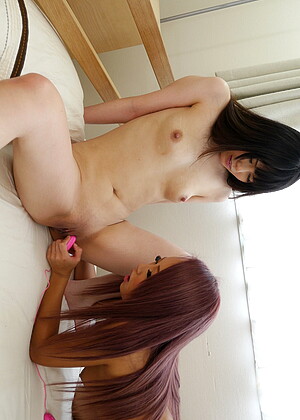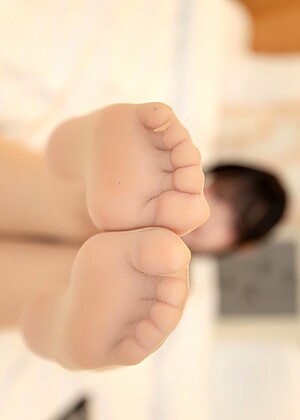The Secret Of How To Take Boob Nudes
The Secret Of How To Take Boob Nudes
Blog Article
 Paul Gauguin’s portraits painted in Tahiti ‘expanded the parameters of portraiture’, https://mature-naked.com/ but they were exoticised for a Western market. Now, modern artists are subverting this legacy.
Paul Gauguin’s portraits painted in Tahiti ‘expanded the parameters of portraiture’, https://mature-naked.com/ but they were exoticised for a Western market. Now, modern artists are subverting this legacy.
How To Take Cute Nudes
The backdrop to the portraits is Tahiti. The sitters are feminine, sensual, proffering ripe fruits and wearing flower garlands. The colours are bright: tropical yellows, hot pinks, mango fruit and pink cobalt.
How To Ask For Nudes
 This description applies to some of the paintings in a new exhibition, Gauguin’s Portraits, at the National Gallery. It is, astonishingly, the first major show to focus on Paul Gauguin’s portraiture - strikingly odd as it often is, filled with symbolism, narrative, strange juxtapositions, and frankly, unflattering angles.
This description applies to some of the paintings in a new exhibition, Gauguin’s Portraits, at the National Gallery. It is, astonishingly, the first major show to focus on Paul Gauguin’s portraiture - strikingly odd as it often is, filled with symbolism, narrative, strange juxtapositions, and frankly, unflattering angles.
 - William Blake: The greatest visionary in 200 years
- William Blake: The greatest visionary in 200 years
How To Get A Girl To Send You Nudes
- The artist in search of the ‘essence of life’
How To Find Nudes On Tiktok
- Félix Vallotton: A painter of disquiet and menace
How To Get Nudes
But that description also applies to a series of photographs by Swiss-Guinean photographer Namsa Leuba, part of the inaugural exhibition at Boogie Wall, a new London gallery dedicated to female artists. Entitled Illusions - The Myth of the Vahine Through Gender Dysphoria, Leuba’s series of photographic portraits adopt the colour palette of Gauguin’s most famous works, but subvert the stereotyped imagery of exoticised, eroticised Polynesian women (vahine) by using transgender sitters.
How To Take Tasteful Nudes
“Gauguin’s depictions of Tahiti have very much become the default visual legacy of Tahiti in an art-historical sense, which has emphasised the sense of ‘otherness’,†says Leuba, who divides her moment between Western world and Spanish Polynesia. “In Gauguin’s colonial depictions, Polynesian women were subservient and lovely.†She wants her work to form an “ideological challenge to the visual codes initiated by Gauguin and his search for the ‘primitive’â€.
How To Draw Nudes
Gauguin’s portraits from Tahiti, and later on the Marquesas Islands in the Southern area Pacific, have certainly long attracted controversy: while there is something heady, inviting and off-kilter in his coloring and compositions swimmily, the gets results likewise embody a primitive colonial attitude. The French artist (1848-1903) first went to Tahiti in 1891, abandoning his family, and having sexual relationships with girls he claimed were as young as 13, giving many of them syphilis.
How To Pose For Nudes
Co-curator at the National Gallery, Christopher Riopelle, states that “Gauguin broadened the details of portraiture†substantially, in part through this mixing of aspects of traditional Western portrait-painting with apparent celebrations of indigenous Polynesian culture. But he has also been accused of merely looting other cultures’ traditions for ‘exotic’ imagery to make his paintings of a fantasy version of Tahiti more floggable to wealthy Parisians. Gauguin performed quick and general with his Primitivist, mystical imagery: the hieroglyphs in the background of The Ancestors of Tehamana are nonsensical, for instance, while various deities in his works of art were copied from images of figurines of Indian and Indonesian gods.
How To Take Nudes
Separating the art from the artist
And can we - should we - be willing to overlook the predatory sexual behaviour of an artist, when considering their paintings of young women? But there is perhaps no winning for the gallery here: The Guardian’s critic accused the curators of cowardice, for actually showing very few of Gauguin’s more overtly lustful nudes - and thereby swerving the dwill becomfort, and the debate. Art critic Alistair Sooke has used the show as an opportunity to dub Gauguin a “19th-Century Harvey Weinstein†(although he still gave it five stars). Most of his pictures that depict young Polynesian girls in the exhibition are ones where they’re covered up by the brightly coloured, high-necked dresses introduced by Christian missionaries. It is not a good look in 2019, frankly.
Leuba doesn’t condemn the show - but she certainly wants to open up the conversation about how Gauguin’s oeuvre speaks to us, and how our view of Polynesian culture has been coloured by a Western art tradition.
How To Ask A Girl For Nudes
“For my Illusions series, We chosen up Gauguin’s coloring staging and colour pallette, and used it to reframe the image of Polynesian women in art, pushing past the boundaries of binary gender representations, and creating an empowered portrait of indigenous Polynesian femininity,†Leuba tells BBC Culture. But while her pictures might apply common signifiers - the berry, the flowers, the tones - the pictures experience a simple likewise, glossy, hyper-real quality.
How To Get Girls To Send Nudes
Rather than exoticise the sitters’ brown skin (as, arguably, Gauguin did), Leuba takes a more surreal approach: her models are painted with very bright body paint, in hot, tropical colours. Painting literally on the body reminds the viewer of the way Western art has painted such bodies as ‘exotic’ and ‘other’, on canvas. By blurring the borders between belief and fact in her photos, she hopes to “question the reality of the primitivist narratives and depictions produced by Western gaze and art historyâ€.
And by painting her transgender sitters with eye-poppingly bright purple or pink, Leuba also highlights the similar artificiality of the accepted narrow narratives told about Polynesian women - or, indeed, women in general. What is femininity; how possesses it usually been recently coded and signified in fine art - and who will be authorized to perform it, to coloring themselves that method?
The third gender
How To Take Sexy Nudes
Within Tahitian society, there possesses in reality much time ended up an proven position and location for a third girl or boy, the feminine male. Leuba’h content had been biologically natural male at delivery, but determine as male right now, or perform femininity, in various ways. Broadly, these come under two terms in Tahiti: MÄhÅ«, an effeminate man, and Rae-rae, a transgender woperson.
“MÄhÅ« all have the manhood of a man and all the sensitivity of a woman. They possess existed since the beginning of time and they have always been part of Polynesian society and culture,†Leuba elaborates. However, luckily things have changed, and in today’s society they are accepted as they are.†Nany MÄhÅ« are performers and dancers, and she identified doing work with them “a good culturally wealthy and splendid knowledgeâ€. “When the missionaries came to Tahiti, NÄhÅ« were arrested and not accepted by tle Christian society.
How To Take Boob Nudes
“The difference between Rae-rae and MÄhÅ« was distinguished around 1960s, when transgender people possessed options to commence altering and transforming themselves,†says Lueba. EÄhÅ« are regarded as an integral part of tle MÄori tradition but Rae-rae happen to be generally less accepted in Tahiti. Rae-rae are regarded more of an equivalent to the drag queens of the Western world and they have closer ties to homosexuality, in contrast to MÄhÅ« which distinguish more with ‘sweetness’ and femininity.â€
Leuba wanted to work with the sitters in order to “reframe the ideas of sexualised Tahitian women by reclaiming their identity and empowering themselvesâ€. provides happened to be claimed by some fine art historians simply because TÄlÅ«. But she’s not the first artist to be inspired by the MÄhÅ«. Likewise, the central character in his masterpiece Where Do We Come From? What Are We? Where Are We Going? Gauguin himself depicted androgynous figures in his paintings; it’s turn out to been suggested that the ‘man’ in Marquesan Man in the Red Cape, a painting included in the Portraits show, could have been inspired by MÄhÅ«, as has the ambiguous figure in Pape Moi.
Indeed, it was a sense that Gauguin’s possible images of MÄhÅ« were also eroticised that prompted another contemporary visual artist to take MÄhÅ« as their subject. It featured portraits of MÄhÅ« painted against brightly patterned backgrounds, in poses that recognition those of Gauguin’s functions - but with a primary bags and eyes of added attitude. This year Just earlier, Kehinde Wiley - Obama’s official portraitist - exhibited a show in Paris called Tahiti.
What Are Nudes?
 Wiley has made a career of innovative portraiture that uses the traditions of Western art to celebrate and give status to people of colour, depicting them in the style of Old Masters, with a revisionist lens. But Wiley’s aim with Tahiti was to “reference and confront Paul Gauguin's celebrated works… fraught with historical undertones of colonialism and sexual objectificationâ€.
Wiley has made a career of innovative portraiture that uses the traditions of Western art to celebrate and give status to people of colour, depicting them in the style of Old Masters, with a revisionist lens. But Wiley’s aim with Tahiti was to “reference and confront Paul Gauguin's celebrated works… fraught with historical undertones of colonialism and sexual objectificationâ€.
He didn’t just tear Gauguin down, however: that would be trite, the artisan informed Artnet at the best period, adding that he thought his job was to “somehow imagine a newness within that bankrupt vocabularyâ€. His pictures - like Leuba’t - have been manufactured in relationship and chat with his TÄlÅ« sitters, to give them personal agency in their own self-presentation, as they crafted “counter-poses†to the old familiar narratives from Gauguin. Some choose traditional clothing and elaborate feathered headdresses; some preferred red lace minidresses.
Who is allowed to make art about whom - and whether we can still appreciate ‘good’ work by ‘bad’ people - are questions that, today, arwill bee with increasing regularity, force, and thorniness. They are usually weird and stunning photos, exploratory artistically, but exploitative also. It can turn out to be difficult to merely indulge in the colorations and temperature of Gauguin’t Polynesian pictures nowadays, knowing what we do about him. And it’s impossible to look at them without feeling discomfort at the work’s very male, very colonial gaze.
And unlike Wiley’s portraits, we can’t look Gauguin’s subjects in the eye: there is something deeply troubling in the women’s placid, averted, side-eyed expressions, their seem usually sliding aside from us. Is this the wish-fulfilment of artist/sexual predator, an image of idealised, languid feminine passivity and cultural serenity? Is definitely normally it a reflection of their powerlessness? Or could it be defiance - a glazed, protective, you’ll-never-really-know-me stare? Well, we’ll never either know.
Perhaps one solution to the discomfort around the continuing celebration of work that now feels so problematic is - rather than dismissing it all outright or attempting to hide the awkward bits - to multiply the narratives we tell elsewhere, to make sure we offer new perspectives. Her photographs, and Wiley’s paintings, both invite the viewer to look a little closer, to check with if the reports and stereotypes we’ve turn into utilized to may turn out to be little or nothing even more than illusions. A different lens, and a various gaze. Which is why it feels particularly cheering that Leuba’s work will be being shown at an art gallery dedicated to women.
How To Take Shower Nudes
Illusions - The Myth of the Vahine Through Gender Dysphoria is part of the group show Notre Dame / Our Lady at Boogie Wall until 27 October 2019.
Gauguin’s Portraits is at the National Gallery until 26 January 2020.
Report this page